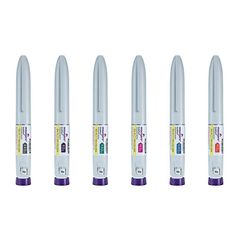Need something else?
We stock over 1103 treatments for 90 conditions

Starting Mounjaro weight loss injections is an exciting milestone in your weight loss journey. However, while it is a safe and effective medication for losing weight, you might also experience some unwanted side effects. Nausea on Mounjaro is one of the most common side effects for new patients, and it’s natural to be worried if you begin to feel queasy.
Episodes of nausea can make eating harder and impact your daily routine, but there are simple, effective ways to reduce or even eliminate your symptoms. Managing Mounjaro side effects shouldn’t be difficult – a few simple tweaks can help you say goodbye to sickness, stay on track and feel healthier as you shed those pounds.
1 | Nausea is a common side effect that usually improves with time
2 | Simple diet changes can help reduce nausea symptoms
3 | Medical help may be needed if nausea becomes severe
Mounjaro is designed to aid weight loss and helps stabilise blood sugar levels. To do this, it mimics your GLP-1 and GIP appetite hormones, slowing down how quickly your stomach empties to make you feel less hungry and fuller, faster. The downside of these changes are they could also make you feel nauseous, especially when you first start the injections or when you increase your dose.
While nausea on Mounjaro can be uncomfortable, it’s usually temporary and manageable. For most patients who experience sickness it’s mild to moderate, like a light queasiness or unsettled stomach, and most often occurs soon after you take a dose. It typically improves within a few days or weeks as your body adjusts to the medication. However, if you suffer from severe nausea, vomiting or symptoms like dehydration or the inability to keep food down you should speak to your doctor straight away.
While some people don’t get any side effects from taking Mounjaro, if you do experience nausea you can help control it through diet and lifestyle changes.
Lifestyle changes, like gentle activity, maintaining an upright posture after eating or introducing a moderate exercise plan, can also help reduce sickness.
The timing of your injections may also play a part in your nausea. Healthcare professionals recommend you take it at the same time, on the same day each week. You may need to experiment with what time works best for you.

For most people who experience nausea with Mounjaro, their discomfort doesn’t last long. However, if your nausea becomes severe, persistent, or is accompanied by symptoms such as excessive vomiting, dehydration, an inability to keep food or fluids down or significant weight loss beyond your expectations, it’s important to speak with your healthcare provider.
If you notice symptoms like abdominal pain, bloating or unusual changes in bowel habits these could indicate a more serious issue. Your healthcare provider can help assess whether adjustments to your dose, medication schedule or additional treatments to manage symptoms are needed. They can also offer more tailored advice on diet and lifestyle changes which may help.

While nausea on Mounjaro is common, especially when you first begin injecting it or move onto a higher dose, there are things you can do which may lessen the chances of feeling sick:
Choose bland foods like plain toast, banana, rice or crackers. Avoid spicy or greasy foods. These are often harder to digest, which can make you feel more queasy. Keeping a food diary can help you to identify and avoid the foods that make you feel worse.
Drinking plenty of water can soothe your stomach and support digestion. Try to avoid sugary drinks or caffeine as these may make symptoms worse.
Eating food too quickly makes it harder for your stomach to process it, and this could make nausea worse. Try and chew each mouthful at least 10 times before swallowing.
Getting out in the fresh air can make you feel better and distract you from any discomfort.
Gentle exercise such as walking or yoga can aid digestion and reduce sickness. Try not to lie down immediately after eating as this can encourage food reflux (where food flows back from your tummy to your mouth).
If you’ve tried these tips and you still feel sick you may like to try over-the counter antacids for a couple of weeks. It’s always best to speak to a healthcare professional first to make sure they’re safe.
Check out our other Mounjaro guides for more help on whether it’s the right choice for you.
It is essential that you speak to a licensed medical professional before starting any weight loss medication. They can provide personalised, expert guidance, assess potential risks and ensure that your chosen treatment is safe and suitable for your health needs.
Nausea is a common side effect of Mounjaro and other weight loss injections which many patients experience as their bodies adjust to the medication. By focusing on smaller meals, healthier food choices and gentle lifestyle changes, you can reduce discomfort and stay on track with your goals. However, if nausea becomes severe or persistent don’t hesitate to speak to your healthcare provider. With the right approach you can manage your nausea and confidently continue with Mounjaro.
Ready to make progress towards your weight loss goals and wondering whether weight loss injections could be the right choice for you? Book a discreet, free weight loss consultation today. It takes just three minutes and you’ll receive personalised advice and recommendations tailored to your needs.
We stock over 1103 treatments for 90 conditions